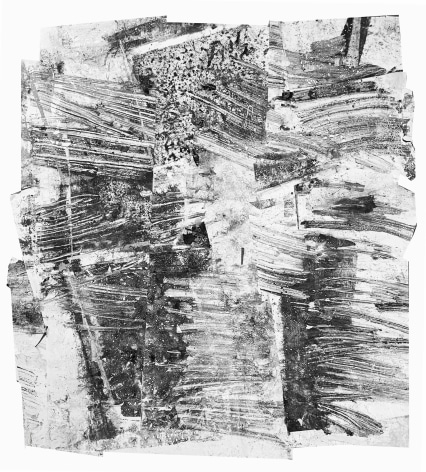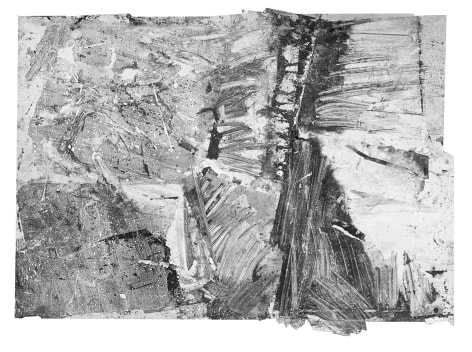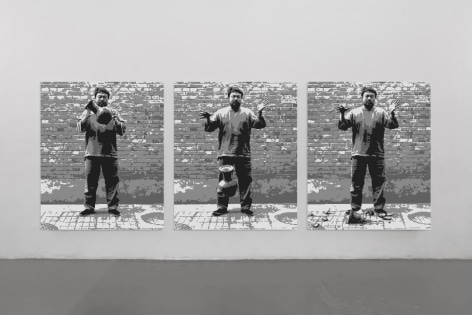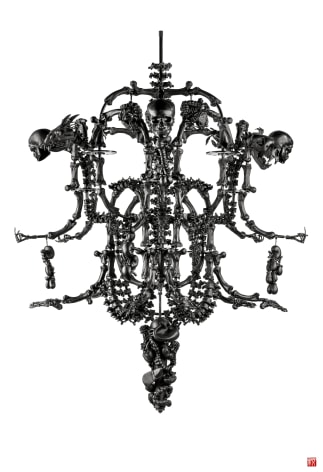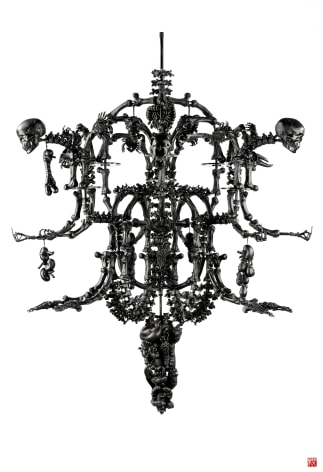Armory Booth, 2021
Chambers Fine Art is proud to present two solo presentations: in our gallery booth we feature new works by Ai Weiwei, including a new version of Dropping a Han Dynasty Urn, 1995-2021 and a pair of just completed prints, Obsidian I and Obsidian II, 2021. A monumental version of Dropping a Han Dynasty Urn in Lego, 2015 dominates the booth. On a large 32 foot feature wall at the entrance to the fair, we will also present two monumental works by Zheng Chongbin, Displaced Surface A-001 and Displaced Surface A-002, created specifically for the Armory Show.
In 2010 a commentator on the work of Ai Weiwei remarked that “his fame and image remain primarily associated with the iconoclastic component of his art and especially his 1995 photographic triptych, Dropping a Han Dynasty Urn.” This remains true today even when it is his identification with the cause of human rights that has contributed to the widespread recognition of his name. The origin of the triptych as we know it today dates back to 1995 when Ai was living in his family home in Beijing, after having spent a decade in New York in the 1980s and early 1990s. He spent a great deal of time in the antique markets that at the time had an abundance of material excavated during the rebuilding of Beijing and throughout the 1990s. Handling thousands of objects and beginning to collect himself, he began to develop considerable expertise. He also began a lifelong interest in questions regarding the real and the fake, copy versus original, and began to look askance at the unquestioning veneration for anything old.
The brief performance Dropping a Han Dynasty Urn raises many questions, and this accounts for a large part of its fascination. There may be a reference to the violence of The Cultural Revolution and Chairman Mao’s statement that the only way to build a new world is to destroy the old one. It can also be interpreted as a veiled comment on the destruction of heritage going on as a side effect of unchecked modernization.
The Lego triptych is flanked by Obsidian I and Obsidian II, two just released prints that are based on a massive chandelier on which Ai Weiwei been working since 2017 at the Berengo Glass Studio on the island of Murano. Known for his practice of working with skilled craftsmen in all disciplines, Ai’s chandelier was a challenge both to the traditional function of a chandelier and to the skills of the glass blower. Instead of glistening, Ai’s chandelier is black and utilizes imagery of human skulls, animal bones, internal organs etc. The prints are based on extremely high resolution photographs taken in the Berengo Studio and are printed using a new black pigment that has allowed the printing of the richest blacks ever printed.
Zheng Chongbin
A resident of the San Francisco Bay Area for over three decades, Zheng is inspired by the region's distinctive atmospheric and environmental effects and rich ecologies, as well as by the California light and space movement. Displayed prominently at the entrance to the Armory Show, Displaced Surface A-001 and Displaced Surface A-002 continue Zheng’s longstanding experimentation with painting for which he has developed a personal language that mixes traditional Chinese elements (ink, Xuan paper) with Western tools and materials (brushes, acrylic, and other media) to create abstract, overlapping planar forms.
Conversant with Western theory and Chinese classicism, Zheng recognizes the deep cultural meaning that is embedded within the traditional materials he uses, but rather than treat them as historical or ‘found’ objects, he activates them, allowing ink, paper, acrylic and water to interact with one another, generating endless visual possibilities. Central to Zheng’s art is a view of the world always in flux, consisting of flows of matter and energy that repeatedly cohere and dissipate. This idea of flux in relation to the space above and below us is the inspiration behind Displaced Surface A 001 and Displaced Surface A 002.


